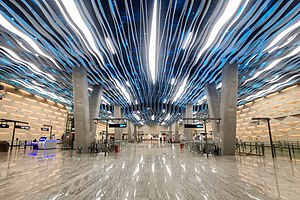
Line 2 is an east–west line in the Shanghai Metro network. With a length of nearly 64 km (40 mi), it is the second longest line in the metro system after line 11. Line 2 runs from East Xujing in the west to Pudong International Airport in the east, passing Hongqiao Airport, the Huangpu river, and the Lujiazui Financial District in Pudong. With a daily ridership of over 1.9 million, it is the busiest line on the Shanghai Metro. The eastern portion of the line, from Guanglan Road to Pudong International Airport, was operated almost independently from the main segment until April 19, 2019, when through service began. The line is colored light green on system maps.
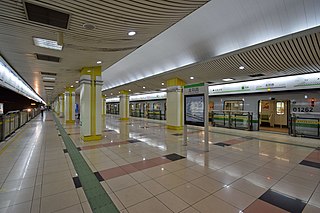
Longyang Road is an interchange station that serves both the Shanghai maglev train and lines 2, 7, 16 and 18 on the Shanghai Metro. It provides quick transfers between the metro system and the Maglev train to and from Pudong International Airport. There are two separate fare-paid zones at this station: one for the conventional metro lines and one for the Maglev train, which has a separate fare system. It is also the third four-line interchange station in mainland China and the second in Shanghai, after Century Avenue and Chegongmiao in Shenzhen, and the first five-line interchange station in Shanghai and mainland China.

Hongqiao Road is an interchange station between Lines 3, 4 and 10 on the Shanghai Metro. It is the southernmost station of which Lines 3 and 4 share the same tracks. The station opened on 26 December 2000 as part of the initial section of Line 3 from Shanghai South Railway Station to Jiangwan Town, and Line 4 service began here on the final day of 2005. The interchange with Line 10 opened on 10 April 2010.
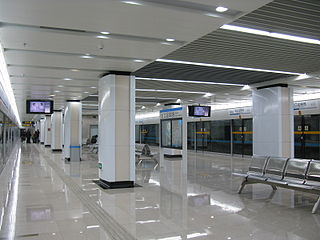
Hongkou Football Stadium is an interchange station between Lines 3 and 8 on the Shanghai Metro. The station opened on 26 December 2000 as part of the initial section of Line 3 from Shanghai South Railway Station to Jiangwan Town; the interchange with Line 8 opened on 29 December 2007 as part of that line's initial section from Shiguang Road to Yaohua Road.

Hongqiao Airport Terminal 2 is an interchange station between Line 2 and Line 10 of the Shanghai Metro. The Line 2 portion opened on 16 March 2010, and the Line 10 part opened on 30 November 2010.

Hongqiao Railway Station is a Shanghai Metro station located within the Shanghai Hongqiao railway station complex in the city's Minhang District. As part of a major transportation hub, it serves as an interchange between Lines 2, 10, and 17. It additionally serves as the western terminus the mainline service of Line 10, as well as the eastern terminus of Line 17. The station first opened as a Line 2 station on 1 July 2010, with Line 10 operations commencing on 30 November 2010. More than seven years later, Line 17 service was introduced with the opening of that line on 30 December 2017. With three island platforms totaling six platforms, the station is one of the largest in the system and features a cross-platform interchange between Lines 2 and 17.

Line 10 is a southwest–northeast line of the Shanghai Metro network. It officially opened for service on April 10, 2010. The line runs from Jilong Road to Hongqiao Railway Station, with a branch line from Longxi Road to Hangzhong Road. It has been given the unofficial nickname “Golden Line” as it links many of the city's tourist attractions like Yuyuan and Xintiandi. It connects the Hongqiao International Airport with the downtown core of Shanghai, and also the dense residential districts of Yangpu and Hongkou. It is the only line in the system with numbered station codes. It is the first high-density and high-volume fully automatic subway line in Mainland China, operating with GoA4 unattended train operation. The line is colored lilac on system maps.

Line 9 of the Beijing Subway is a rapid transit line in western Beijing. The line runs 16.5 km (10.3 mi) from the National Library in Haidian District to Guogongzhuang in Fengtai District with 13 stations. All stations are fully underground. Line 9's color is chartreuse.

Xizhimen station is an interchange station for Line 2, Line 4 and Line 13 of the Beijing Subway. Just outside this station is Beijing North railway station. Line 2 opened on September 20, 1984; Line 13 opened on January 28, 2003; and Line 4 opened on September 28, 2009. With the addition of Line 13 and Line 4, Xizhi Men Station became the second 3-way transfer station. With a peak daily ridership of over 770,000 passengers, Xizhi Men Station is also one of the most crowded stations of the whole Beijing Subway system. It sees over 170,000 transfers per day between the 3 lines serving the station.
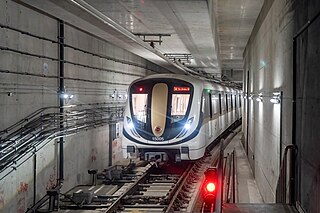
Line 15 of the Shanghai Metro is a north-south metro line in the city of Shanghai that opened on 23 January 2021. The line begins at Gucun Park in Baoshan District at its northern end, and terminates at Zizhu Hi-tech Park in Minhang District at its southern end, via Shanghai West Railway Station and Shanghai South Railway Station. It will be 42.3 kilometres (26.3 mi) in length and have 30 stations. The line is one of Shanghai Metro's new batch of high capacity fully automated and driverless lines along with Lines 14 and 18. The line is colored ivory on system maps.

Line 1 of the Tianjin Metro runs from the north-west to the south-east of downtown Tianjin. It is 42.227 km (26.2 mi) in length with 32 stations.

Wangjingxi is an interchange station between Lines 13 and 15 on the Beijing Subway. The station was the western terminus of Line 15 until it was extended west to Qinghua Donglu Xikou on December 28, 2014.
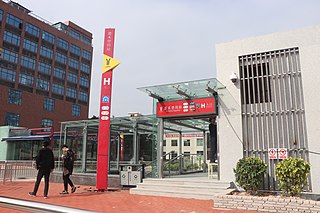
Jiahewanggang Station of Guangzhou Metro, formerly known as Jiahe Station during its planning stages, is an interchange station between Lines 2, 3, and 14, and also the northern terminus of Line 2. It is located underground, just northwest of Lingnan New World Garden in Baiyun District of Guangzhou. It started operation on 25 September 2010. On 28 December 2018, Line 14 opened. Jiahewanggang became the interchange station of Line 2, Line 3 and Line 14.

Gangxia North station is an interchange station for Line 2, Line 10, Line 11 and Line 14 of the Shenzhen Metro. Line 2 platforms opened on 28 June 2011, Line 10, Line 11 and Line 14 platforms opened on 28 October 2022. Measuring 220,000 meters square, it is 1.6 times as large as the nearby intermodal Futian station. It is the second four-line interchange hub in Shenzhen after Chegongmiao station.

Zhushikou station is an interchange station on Line 7 and Line 8 of the Beijing Subway.

Jin'anqiao station is an interchange station on Line 6, Line 11 and Line S1 of the Beijing Subway.
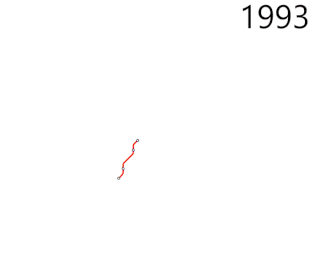
This article lists the openings of lines, line segments, stations and fare schemes of the Shanghai Metro, a rapid transit system serving Shanghai, China, and one of the fastest-growing metro systems in the world. The first section opened in 1993, and the system currently has 802 kilometres (498 mi) of track in operation, making it one of the world's largest rapid transit systems by route length and second largest by number of stations.

Workers' Stadiumstation is an interchange station between Lines 3 and 17 of Beijing Subway, of which the Line 17 part opened on 30 December 2023 and the Line 3 part will open in 2024. The Line 17 station will be the southern terminus of the northern section of the line until it connects to the south section at Shilihe.

Xibahe station is a station on the Line 17 of Beijing Subway, which opened on 30 December 2023. The station will be the interchange station between Lines 12 and 17 in 2024.
